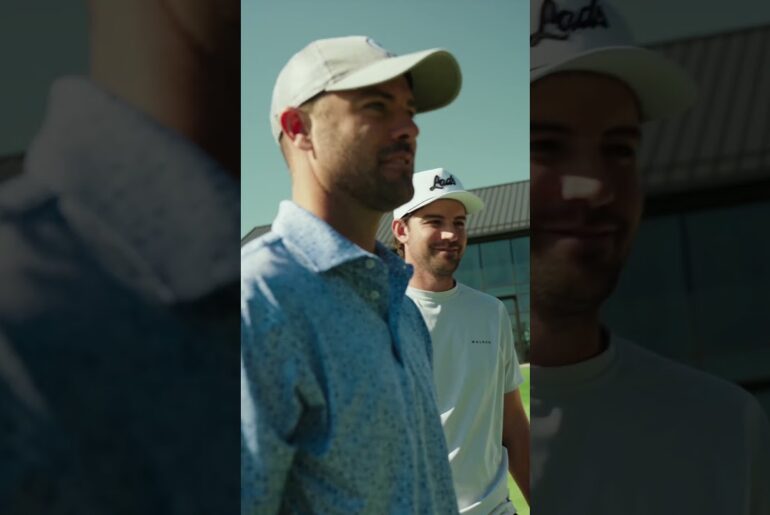Get ready for the Butterfield Bermuda Championship at Port Royal Golf Club! We’re breaking down the PGA TOUR field for this exciting tournament taking place from November 13th to 16th.
The field is set and we have a mix of seasoned veterans and rising stars. Here’s a quick overview of the qualification criteria and the players to watch out for:
Tournament winner in the past two seasons: Keep an eye on Michael Brennan, Rafael Campos, and Francesco Molinari.
Career money exemption: Ryan Palmer and Brandt Snedeker make their way into the field.
Sponsor exemptions: Henry Smart and Andrew Zielinski from the DP World Tour, Korn Ferry Tour, and Q-School category.
PGA Section Champion/Player of the Year: Paul Ferrier joins the competition.
Top performers in FedExCup rankings: Adam Schenk, Adam Hadwin, and more.
With a diverse range of players, this tournament promises thrilling golf action. Who do you think will take home the trophy? Let us know in the comments!
PGATOUR #BermudaChampionship #Golf #TournamentPreview
Ever wondered how the PGA Tour decides which golfers get the chance to compete in their prestigious tournaments? It’s a captivating world of rankings, exemptions, and strategic selections that can make or break a player season, and it sparks endless debates. But here’s where it gets controversial. While some see it as a fair meritocracy, others argue that exemptions can give an unfair edge to certain players. Let’s dive into the details of the Butterfield Bermuda Championship, where the FedEx Cup fall Series heads to the stunning Port Royal Golf Club from November 13th to 16th and explore how the field is assembled in a way that’s easy for beginners to grasp. The PGA Tour relies on a standardized approach to build tournament fields, primarily using the priority ranking from the current season. This ranking is based on performance like FedEx Cup points which track a player’s success throughout the year. To help newcomers understand, think of it like a leaderboard where top performers earn automatic spots. But there are also extra categories for exemptions and qualifiers that add flexibility. For example, a player might not be in the top rankings, but could qualify through a sponsor’s invitation if they fit specific criteria. Kind of like a wildcard entry in a sports draft. Field sizes differ by event and each one has its own set of event specific exemptions. Fully exempt PGA Tour members, those who’ve earned permanent status through consistent high performance get guaranteed entry into all full field events. Then there are conditional categories that can shift or if a reshuffle based on accumulating FedEx Cup points over time. Categories marked with the reshuffle mean they’ve undergone one of these adjustments already. And this is the part most people miss. Due to the disruptions caused by the coid9 pandemic, some categories received an extra year of eligibility to ensure fairness and continuity for players affected by schedule changes. It’s a reminder of how real world events can influence even the most structured systems. Now onto the latest updates. As of Friday, November 7th, William Mau withdrew after the deadline, making way for new entries. Robert Streb and Tyler Duncan joined via sponsor exemptions for members who wouldn’t qualify otherwise. A common way for brands to boost their visibility while giving rising stars a shot. The tournament winners from the past two seasons are all set to return, including notable names like Sahit Gala, Camilo Viegas, and Kevin Yu. These slots reward recent success and keep the excitement high. Moving to the career money exemption. Ryan Palmer and Brandt Snedker are in highlighting how lifetime earnings can secure spots even for veterans. Sponsor exemptions bring in talent from related tours such as DP World Tour, cornfairy tour or Q school graduates. Henry Smart and Andrew Zillinsky fall into this DP World Tour, Cornferryy Tour, Qchool category. Unrestricted sponsor exemptions include players like Oliver Bchard, Blades Brown, and Chase Johnson. These are broader invitations that can shake things up. Paul Farrier earned his spot as a PGA section champion or player of the year, showcasing regional excellence. From the top 30 in FedEx Cup playoffs, Adam Shank is competing along with top 70 from the prior year standings through the playoffs. Adam Hadwin, Eric Cole, Patrick Rogers, Mark Huard, and Victor Perez. The top 125 in FedEx Cup fall includes Bo Hustler, Justin L, Doug Gim, and others like Matt Cooer and Henrik Norlander, demonstrating how mid-season rankings influence inclusion. Major medical extensions granted Trey Mullenax and Danny Willlet entry, ensuring players recovering from injuries aren’t sidelined indefinitely. PGA Tour University Accelerated for the current season adds Luke Clanton and Gordon Sergeant promoting the development of young talent straight from college programs. The DP World Tour/Cornferryy Tour/QC School category reordered for this event features Kevin Roy, Max McGrevy, Danny Walker, and a long list including Jesper Svenson, Ricky Castillo, and Quaid Cumins. These are players qualifying through satellite tours providing pathways for international golfers. Finally, the reorder category for 37 to 44 includes Pierce Sunudi, Hayden Springer, Taylor Montgomery, and players like Cameron Champ and Austin Cook wrapping up the field with more qualifiers who earned their way through the system. This system is designed to balance skill, experience, and opportunity, but it’s not without its critics. For instance, the reliance on sponsor exemptions might seem like favoritism to some. Is it truly merit-based or does it prioritize marketing over pure competition? And with reshuffles due to points, could this system inadvertently disadvantage players who have a slow start but great potential? What do you think? Does the PGA Tour get it right? Or is there a better way to select fields? Share your thoughts in the comments. I’d love to hear agreements, disagreements, or even your own takes on golf selection process.







